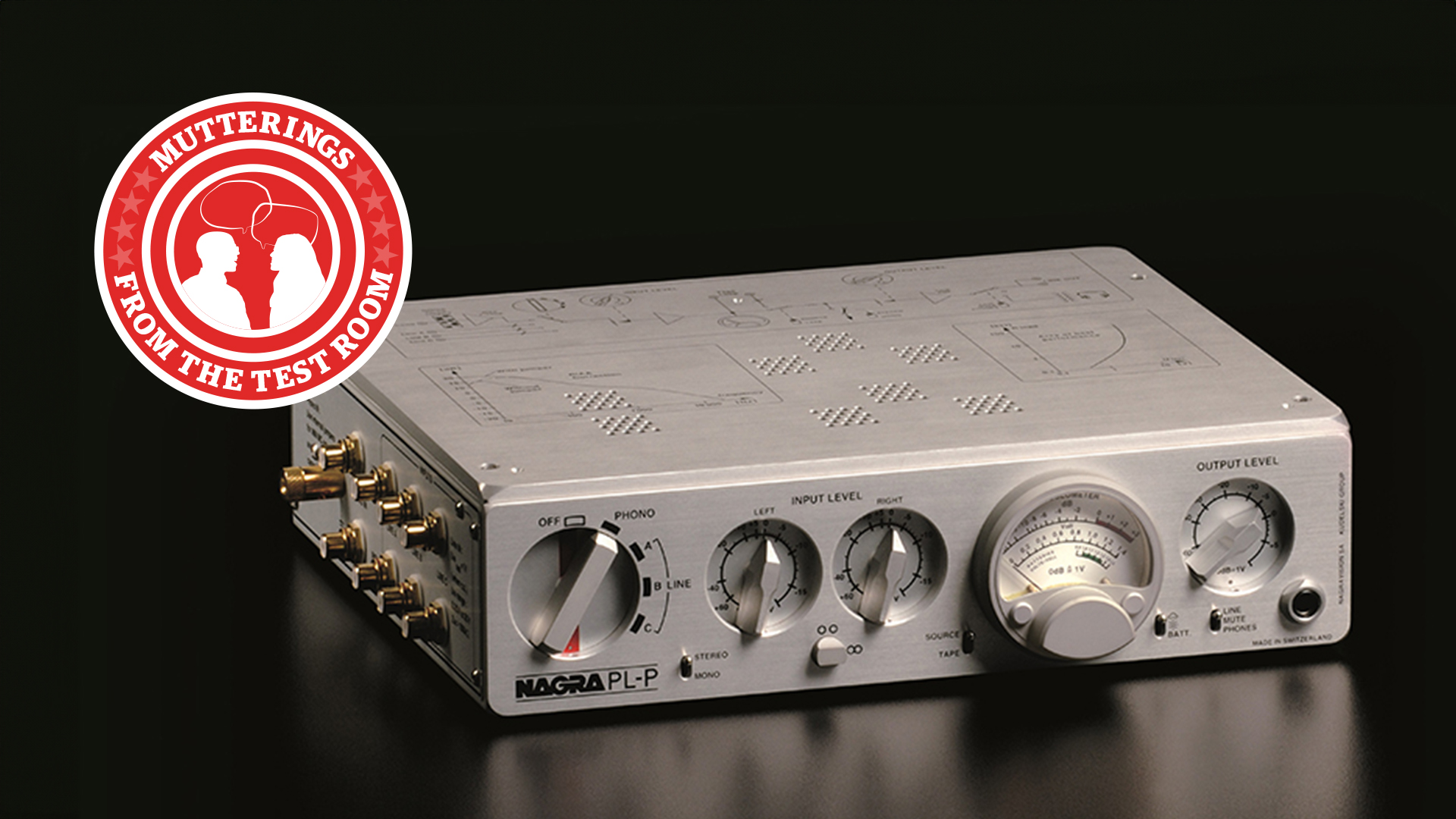What Hi-Fi? Verdict
The upgrades are more subtle than perhaps expected, but the A95K is nonetheless one of the very best OLED TVs you can buy
Pros
- +
Supremely natural, authentic picture
- +
Bright highlights that others miss
- +
Excellent sound by TV standards
Cons
- -
LG OLEDs are better for gaming
- -
Not outright brighter than the best 'standard' OLEDs
- -
Bravia CAM's usefulness is dubious
Why you can trust What Hi-Fi?
QD-OLED, which is (broadly speaking) designed to blend the best qualities of both OLED and QLED, made its debut last year in this, the Sony A95K.
OLED has become the premium TV technology of choice thanks to its perfect blacks, pixel-level contrast control, near-perfect viewing angles, super-thin designs and increasingly aggressive pricing, and QD-OLED is designed to overcome its main limitation – brightness.
If you’re therefore expecting the A95K to be vastly brighter than the OLED norm, you might be slightly disappointed. In fact, it’s fair to say that the first QD-OLED TV isn’t a huge leap in quality over the best standard OLED TVs you can currently buy. It is better, though, and that makes it a truly exceptional TV.
Price
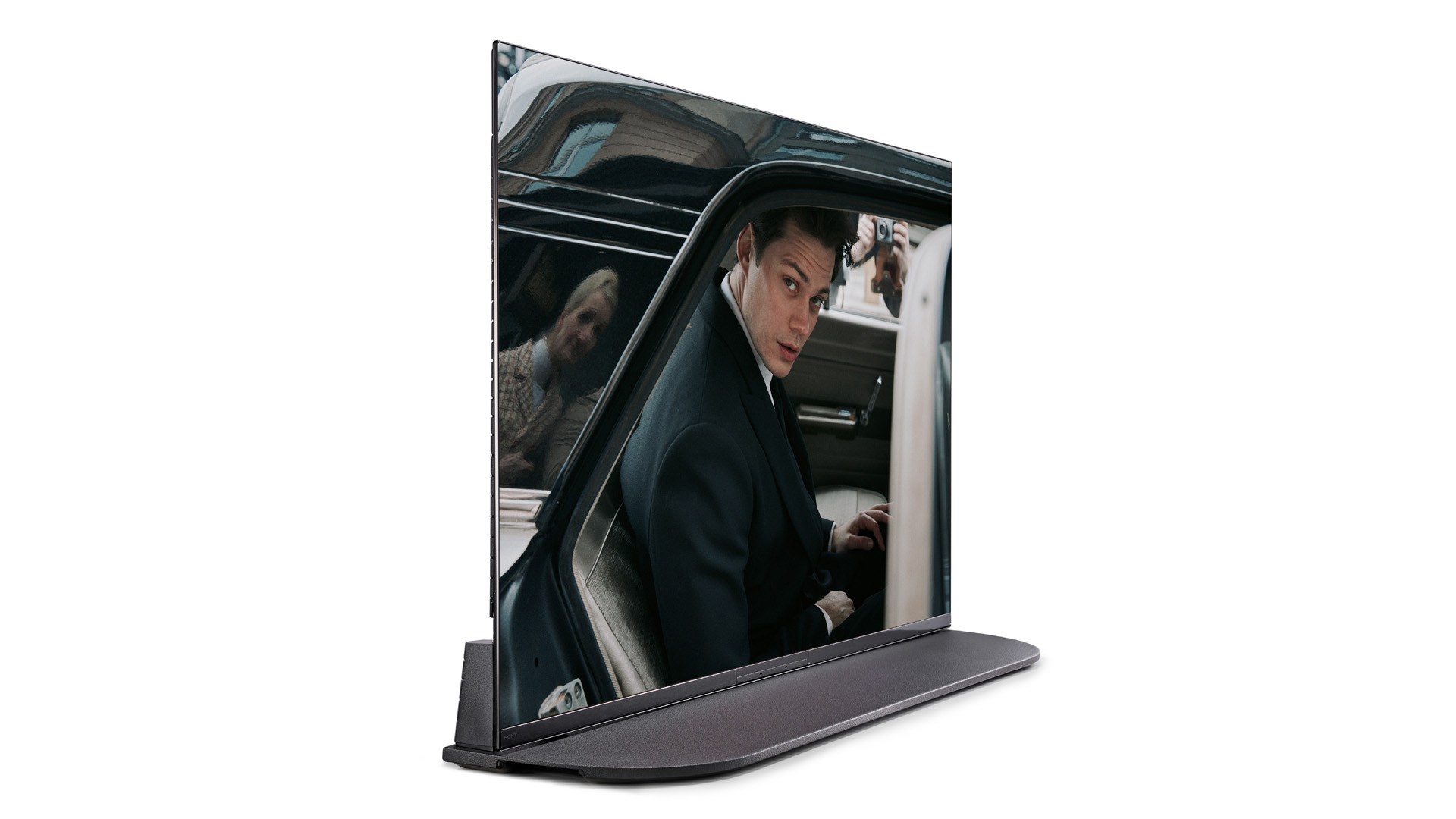
The 55-inch A95K we’re reviewing here (XR-55A95K to give its full title) was priced at £2699 / $3000 at launch. It's now been available for over a year but it's not dropped in price as much as one might expect – £2199 / $2500 seems to be the norm.
That means it's vastly more expensive than Samsung’s 55-inch S95B (£1399 / $1450), which was launched at the same time as the Sony and with which it shares a panel. In fact, the Sony A95K is still much more expensive than Samsung flagship second-generation QD-OLED model, the new S95C (£1699 / $2165).
Samsung’s Display division is, as it happens, currently the only manufacturer of QD-OLED TV panels, just as LG Display manufactures all of the panels used in standard OLED TVs.
LG isn’t going down without a fight, either, and has this year launched its answer to QD-OLED with its super-bright, MLA-boosted G3, which will set you back £2399 / $2700.
Design
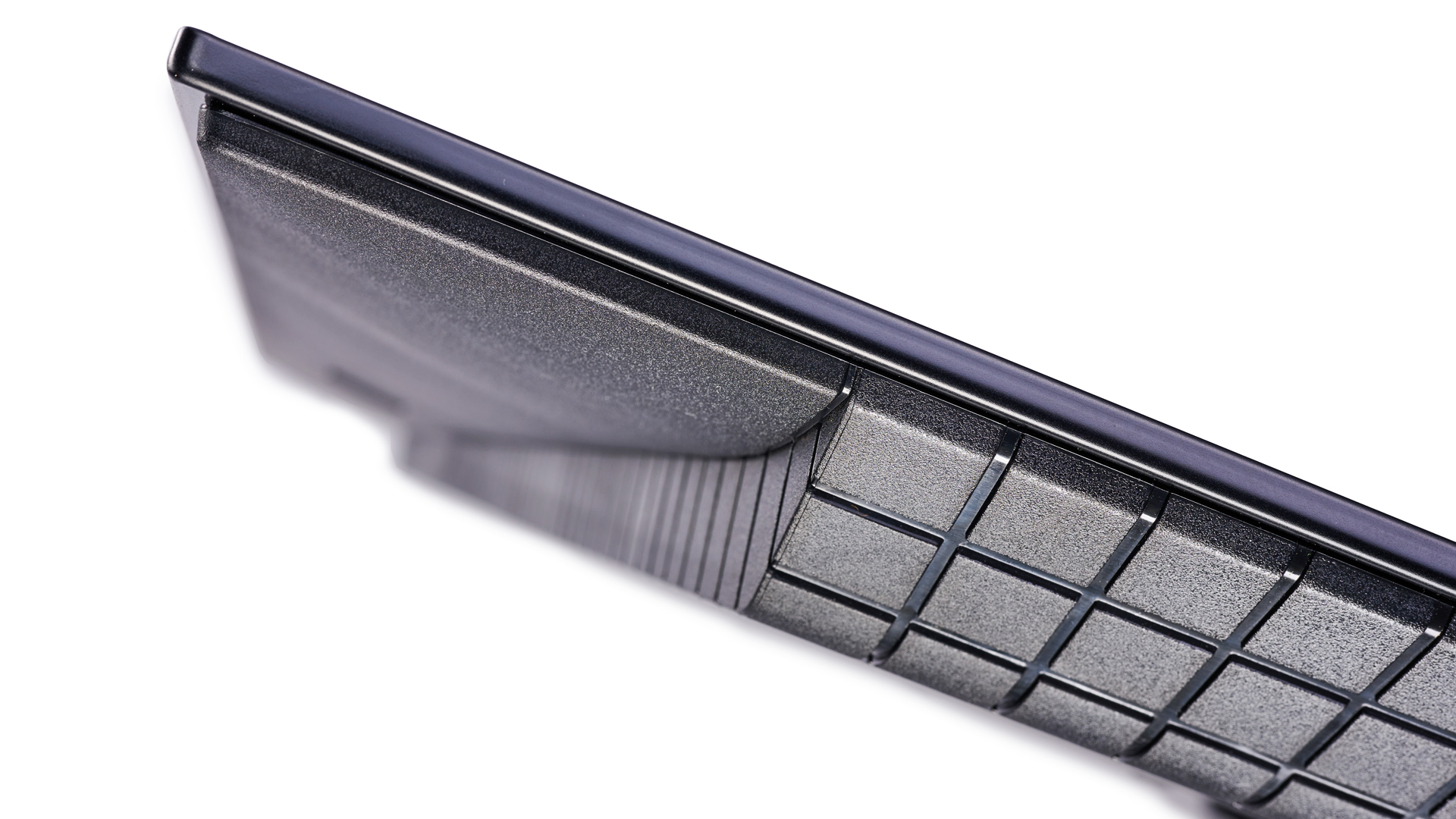
Sony has designed the A95K to be as minimalist as possible. With the stand in its default position behind the TV, all you see from the front is the screen surrounded on three sides by a 7-8mm bezel and on the bottom by a thicker lip that houses elements such as the IR receiver and far-field microphones and displays a very subtle Sony logo. In this position, the set has a slight lean backwards that should compensate for it standing lower on your furniture than would a TV with a more typical stand.
Alternatively, the stand can be positioned in front of the screen so that the TV can be positioned more or less flush against a wall. To these eyes that's actually the more striking of the two positioning options, but which will suit you will depend on your room and furniture. Wall-mounting is of course also an option, with the stand detaching entirely.
At 4.3cm the A95K is just a smidge thinner than the LG C2 and C3 (both 4.5cm) but a fair bit thicker than the G2 and G3 (both 2.5cm). Because the plastic chassis section at the back covers more of the set’s rear than is typical of an OLED, it could possibly be mistaken for a backlit TV, with only a small section of OLED super-slimness on display. This rear enclosure has a grid pattern that makes the TV's behind a little more interesting than that of most other sets, and plastic panels can be used to hide the connections and cables.
Features
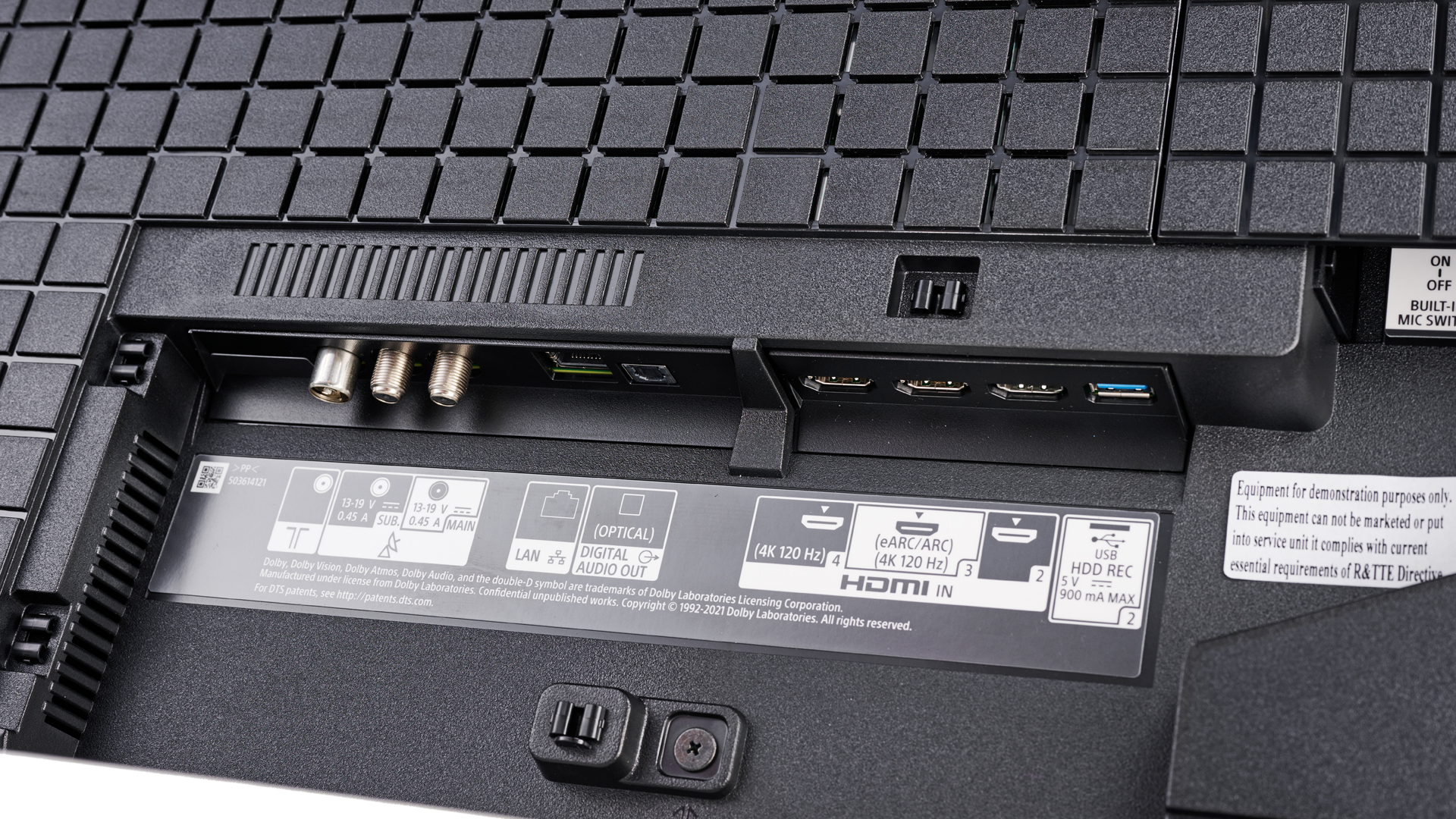
Towards the top of the back panel is an unusual rectangular notch. This is for the Bravia CAM camera, which comes with the A95K (and the Z9K 8K MiniLED TV) and magnetically attaches at this point, peeking over the top edge of the screen.
While at launch the Bravia CAM only offered video chat functionality, it does now support the promised Ambient Optimisation Pro (which adjusts picture and sound based on where you are in the room), Proximity Alert (which is designed to prevent children from standing or sitting too close to the TV), Gesture Control and Auto Power Saving Mode (which detects when you’ve left the room and dims the screen) features. Some people may find some of these features useful, but we think that most buyers will ignore them. In fact, they might never bother connecting the camera. We can’t help but wonder how much it’s added to the A95K’s overall price and rather wish Sony had instead made it an optional extra.
If you prefer to interact with your TV the more traditional way, you'll be pleased to discover that the A95K comes with a remote that's 36 per cent smaller than last year's zapper, with a reduction in buttons from 49 to 25. It feels good in the hands, has well-spaced, pleasingly clicky and – best of all – backlit buttons, and Sony has even added a neat and genuinely useful finder function that has the remote emit a sound when you say 'Okay Google, find my remote' to the TV. A basic, plastic remote is also included in the box (at least in Europe). It’s rather cheap and nasty, with very spongy buttons, but you should rarely if ever need to use it.
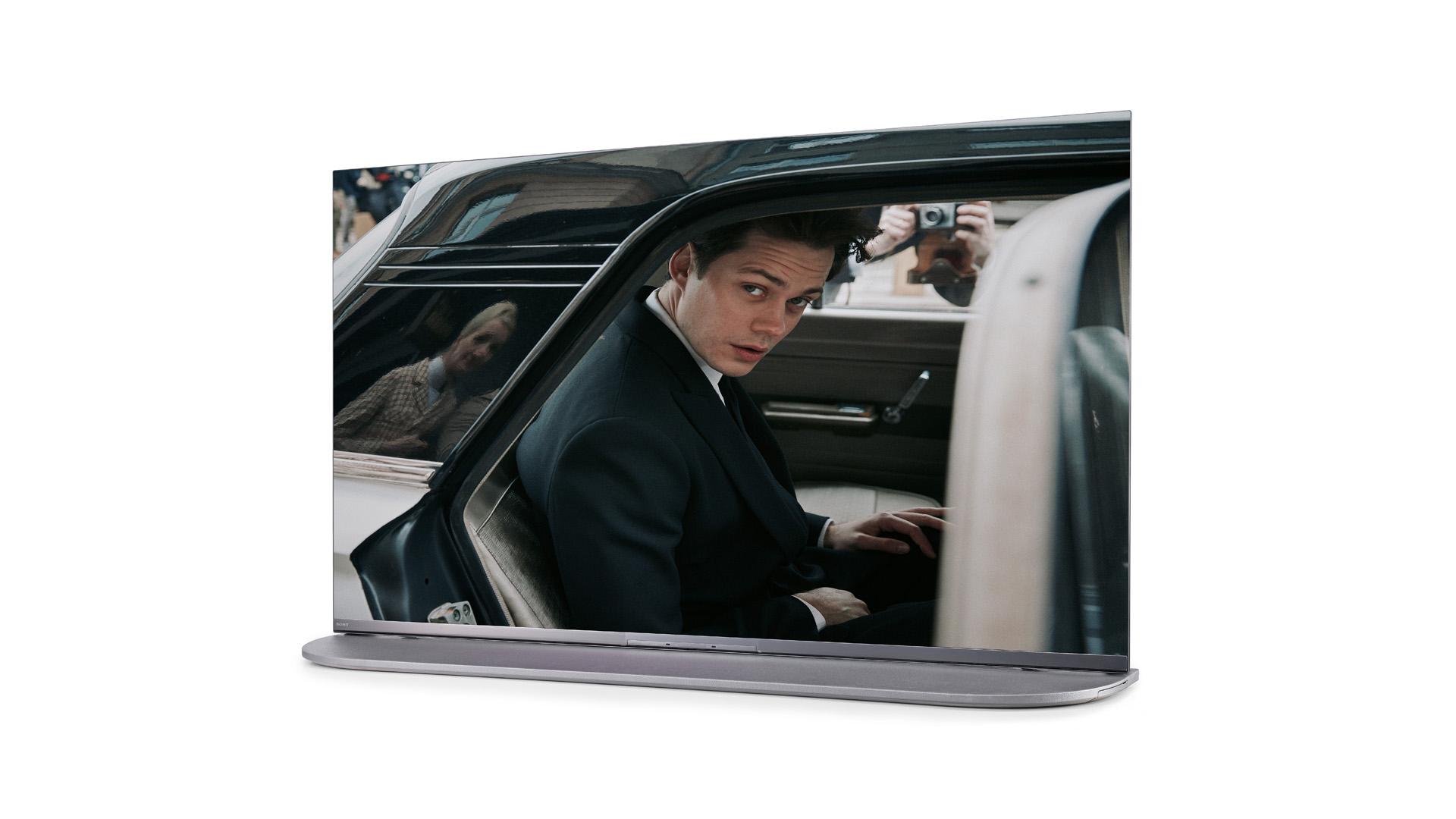
Screen size 55 inches (also available in 65in)
Type QD-OLED
Resolution 4K
HDR formats HDR10, HLG, Dolby Vision
Operating system Google TV
HDMI inputs x4
HDMI 2.1 48Gbps, x2
Gaming features 4K/120, VRR, ALLM
Input lag 21ms
ARC/eARC eARC
Optical output Yes
Dimensions (hwd, without stand) 71 x 123 x 4.3cm
Sony uses the Google TV operating system for most of its TVs, including the A95K. Overall, this is a very good platform that’s pretty snappy in use here and puts increasingly intelligent personalised recommendations front and centre, making it very quick to find something new to watch or to jump back into. Unfortunately, the vast majority of recommendations presented are still from Amazon Prime Video and Disney+, with just a couple of Apple TV titles and a single My5 TV show thrown in. That Netflix is missing from the recommendation engine is clearly an issue, but it’s not one that’s exclusive to Google TV or Sony.
There is of course a Netflix app on the TV, complete with Dolby Vision and Dolby Atmos support. The aforementioned Disney+, Amazon Prime Video and Apple TV are all present and largely correct (Disney+ is lacking Atmos support), as are all of the major music streaming services. In the UK you also get Now and BT Sport, and all of the main catch-up services are present both as individual apps and as part of the YouView TV platform. There’s also a Freesat tuner for those who want or need to get their live TV service via satellite.
The A95K of course also features Sony’s own Bravia Core service, which delivers blockbuster movies in noticeably higher quality than you get from rival services – assuming you've got the internet speeds (80Mbps+ for the maximum quality) to handle it. You get 10 credits that can be redeemed against films in Bravia Core when you buy your TV.
On the gaming front, the A95K is very similarly specced to Sony's 2021 OLEDs but with one key exception – VRR works right out of the box. On top of that, there are two 48Gbps HDMI 2.1 ports that support 4K 120Hz gaming from the PS5, Xbox Series X and the latest PC graphics cards. Unfortunately, one of those HDMI 2.1 sockets also handles eARC (Enhanced Audio Return Channel), so if you need that for a soundbar or AV receiver, you'll have just one HDMI 2.1 input left.
ALLM is supported by the A95K, as is the PS5-specific version called Auto Genre Picture Mode. There's unfortunately no HGiG setting or a Dolby Vision Game mode, but the A95K does support Auto HDR Tone Mapping, which allows a PS5 to detect the specific model of TV to which it’s connected and automatically select the appropriate HDR tone map – although we recommend that you manually calibrate anyway as we found the recommended settings to be just a smidge off. Input lag, meanwhile, measures 21ms, which is not as fast as some but will be completely imperceptible to most (if not all) gamers.
Of course, the most exciting feature of the A95K is its QD-OLED panel, which Sony has apparently enhanced through the use of a heat diffusion sheet that distributes heat more effectively, and temperature distribution mapping that helps prevent image retention.
Sony's Cognitive Processor XR, which was first introduced in 2021, has a big role to play in terms of getting the most out of the QD-OLED panel, with an enhanced version of its Flexible Colour Contrast Control feature seemingly designed to make the most of the potential extra vibrancy made available by the new panel technology. There's also a new 'Depth Map' feature that identifies and enhances near objects while slightly suppressing the background in order to increase depth perception.
Picture
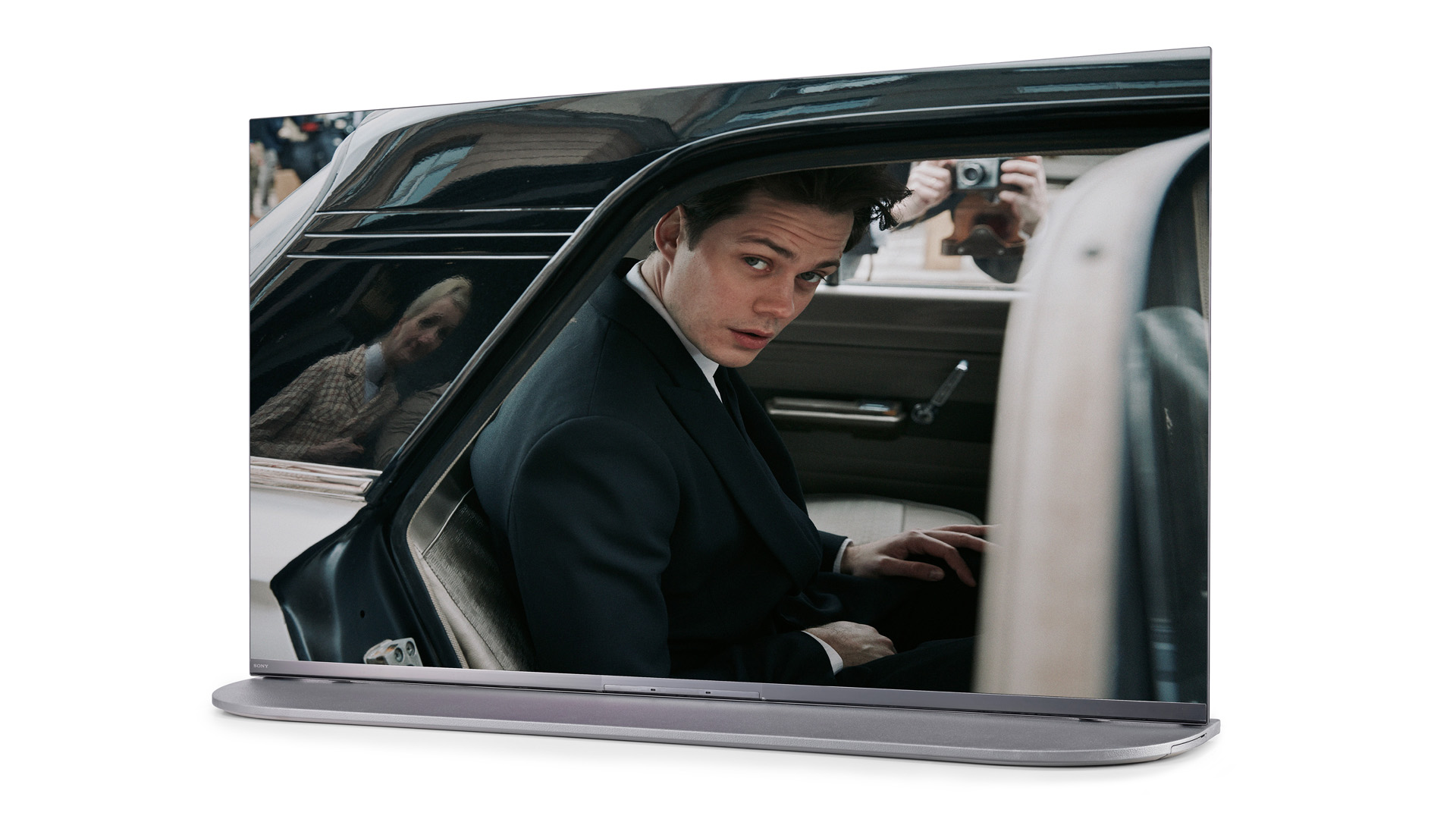
Kicking off with Rogue One in Dolby Vision, the depth and solidity of the image is immediately striking. The Rebel Alliance U-Wing ship stands out brilliantly from the desert landscape of Jedha, while the mountain-top city and Star Destroyer hovering above it are reproduced with exceptional three-dimensionality. This solidity is the result of a combination of factors: excellent sharpness, loads of fine detail, brilliant contrast and, in all likelihood, Sony’s Depth Map feature.
Of the A95K’s two Dolby Vision picture presets, Dolby Vision Dark is best avoided – it’s simply too dark, even in a pitch black room, with too much detail lost to shadows. Dolby Vision Bright is excellently judged though, providing deep, detailed blacks with plenty of contrasting pop. What may surprise you, though, is that the A95K is no brighter than the LG G2 overall. In fact, in many scenes it’s LG’s top OLED Evo model that looks brighter.
Where the A95K QD-OLED comes up trumps is in the detail and colour contained within the brightest highlights. The A95K provides a lovely, subtle orange warmth that gradually fades towards the centre of a sunset but never truly disappears, whereas the G2 is largely white in the brightest areas. There’s more detail and shading to the bright, white clouds over Scarif from the A95K, too. This is where the new technology seemingly pays off: it’s not brighter than the brightest traditional OLED TV, but it does offer better brightness.
Switching to No Time To Die in HDR10, these excellent traits remain and our attention turns to the A95K’s overall colour balance, which is exemplary. It’s easy during one of the scenes at the beginning of the film (when Bond is watching Madeleine in the sea) for a TV to exaggerate Daniel Craig’s tan so that he looks slightly nuclear, but the Sony falls into no such trap, ensuring he looks healthily burnished but natural, while the scenery retains its glorious orange warmth.
A quick hop over to the Blade Runner 2049 4K Blu-ray (okay, we watched it from start to finish for the millionth time) proves that Sony remains the master of motion processing. The company’s rivals have made significant progress in this area over the last couple of years, but neither the G2 nor Samsung S95B can match the A95K’s combination of complete control over shimmer in tricky, unpredictable motion with a total lack of introduced unrealism.
The A95K proves to be an excellent performer with HD content, too. There’s a punch and dynamism to its recreation of Ex Machina that’s at once thrilling and natural, and the upscaling combines sharpness, clarity and cleanliness in a way that simply looks correct. Colours, meanwhile, are just as well balanced with this SDR film as they are with the HDR content we watch. You simply never question the A95K’s delivery, and that’s one of the greatest compliments we can pay any TV.
It does an admirable job with the standard-def delivery of Garden Rescue, too, reproducing the vibrant colours of Charlie Dimmock’s latest design without pushing them to garish levels, and combining crispness and control to a very impressive degree. Daytime TV has rarely looked this good.
Sound
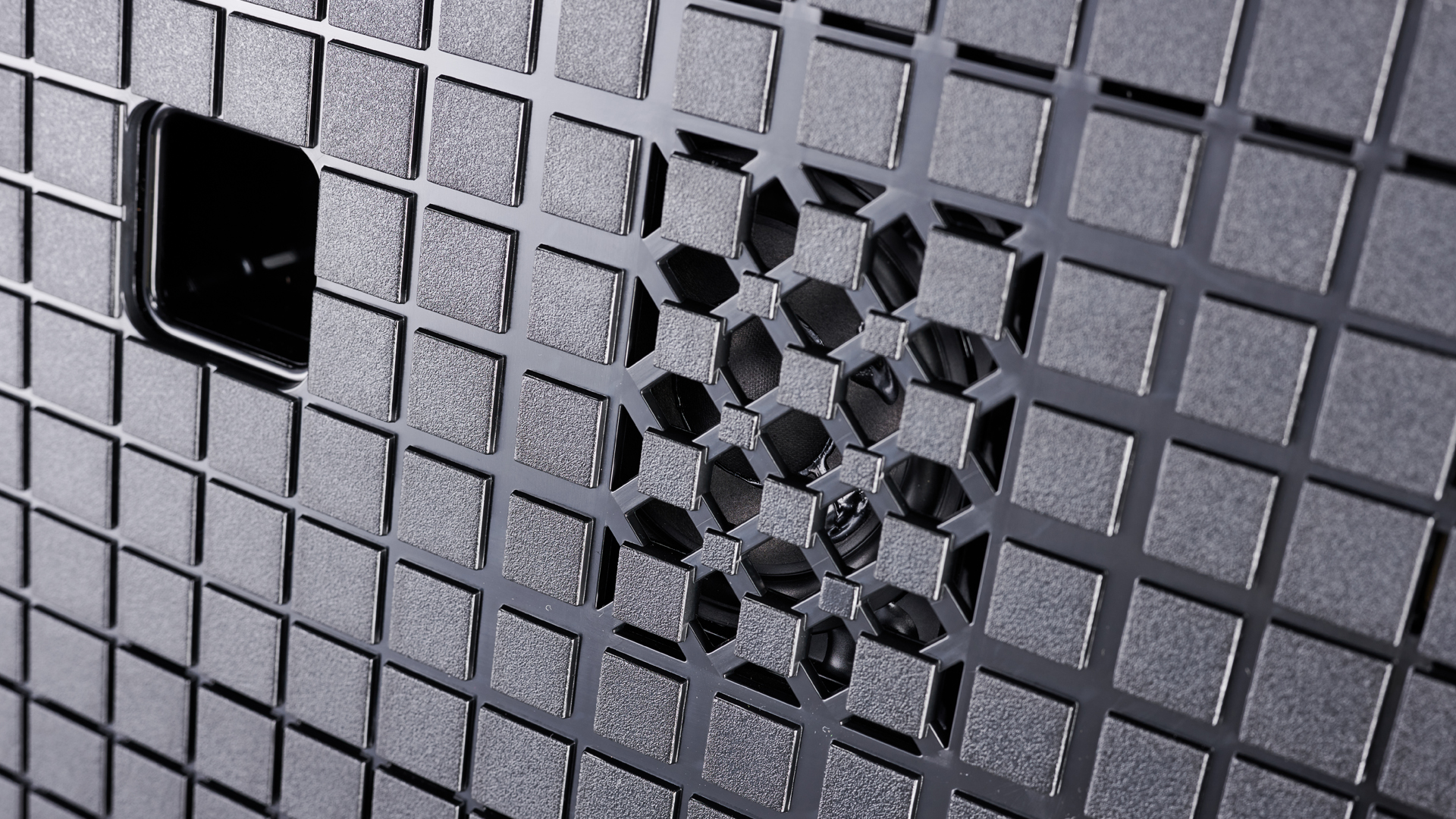
For the A95K’s sound, Sony is using the same Acoustic Surface Audio+ technology (which uses actuators that vibrate the whole screen in order to make sound) that features in all of the company's OLEDs, albeit with larger actuators that are specifically optimised for the new QD-OLED panel. These two actuators combine with two subwoofers for added bass.
The resulting sound is very good indeed by TV standards. During the very tricky opening to chapter 2 of the Blade Runner 2049 4K Blu-ray, the A95K starts strong, with plenty of weight and punch to the tricky bass notes that cause so much trouble for the speakers of most TV sound systems. The soundtrack builds in volume over the course of a couple of minutes, but most TVs hit their dynamic limit within the first 10-20 seconds. Not so the A95K which, even close to its highest volume setting, continues to build right up to the intended crescendo. And, unless your starting point is very high indeed (above the 75-mark, which is very loud on this TV), there’s impressive control to the delivery. Push it beyond this point and a little fizz and brittleness creeps in, but we’re talking about volumes that are too loud for comfort anyway – and volumes that most TVs can only dream of.
There’s good detail and clarity to the delivery, too. And, as is the norm for Sony’s Acoustic Surface Audio TVs, the sound is tied to the onscreen action (it is, after all, literally coming from the screen) in a way that typical TVs can’t match. That isn’t to say that the sound produced is narrow or constrained, as it also stretches a good way out to the sides and even above the TV screen, though not in a way that could be described as virtual surround or Atmos.
To cut an already fairly long story short, while most TVs will be sonically improved by almost any soundbar, it would take something genuinely excellent to significantly upgrade the A95K’s sound. A Sonos Beam Gen 2 would do the job, but something along the lines of the Arc should be considered a more appropriate starting point.
On the subject of serious sound, the A95K continues the flagship Sony TV tradition of having speaker terminals so that the TV can take the place of a centre speaker in a surround sound system. However, while the A95K sounds very good for a TV, it’s very unlikely that it will have anything like the same sonic character as your other speakers, and even the best AV receiver will struggle to compensate for the differences. It’s a similar story with the Acoustic Centre Sync feature, which is designed to utilise the TV’s speakers when it’s partnered with specific Sony sound solutions such as the HT-A7000 soundbar and HT-A9 speaker system. While closer, the tonal differences are still too pronounced for there to be genuine harmony across the front of the soundfield. Our advice is that you either use the TV’s built-in speakers or, preferably, use a dedicated sound system.
Verdict
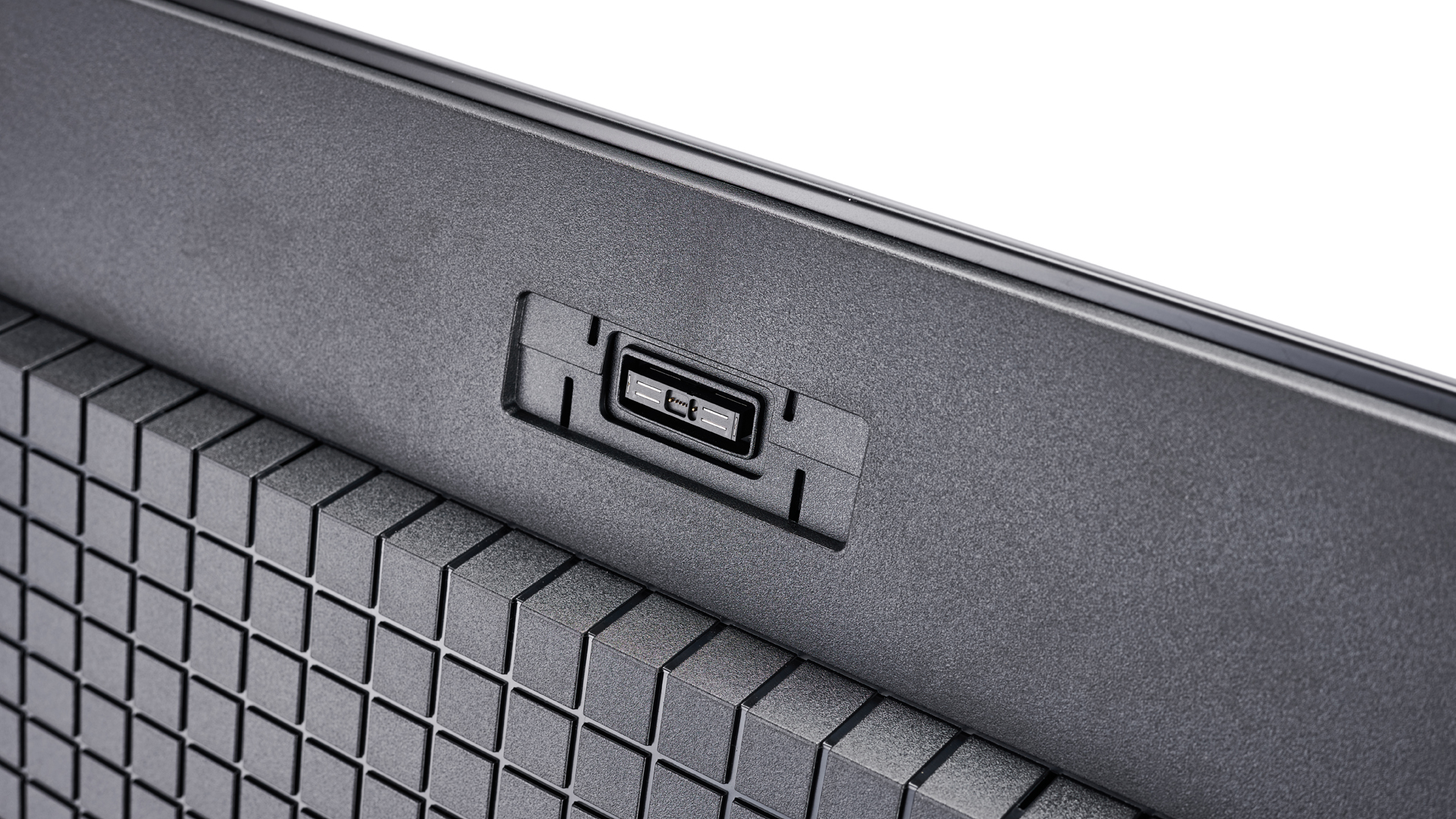
While not the new dawn of TV technology that some may have expected, the Sony A95K pushed the OLED game on in terms of both detail and colour reproduction in the brightest parts of the picture.
Samsung's S95B is more of an all-guns-blazing demo of QD-OLED's abilities, and for some its exceptional punch and vibrancy will be impossible to ignore. However, Sony’s careful, authenticity-led approach means the A95K is more balanced and natural, and the fine detail, sharpness and three-dimensionality of its image are superb.
The one thing holding the A95K back is its price, which hasn't come down as much as one might have expected. That you can buy the newer Samsung S95C or LG G3 for less will be a stumbling block for many, and it's worth noting that Sony's own second-generation QD-OLED model, the A95L, is coming soon.
Even so, the A95K remains a TV of rare talent despite its age, and it's a great buy if you can find it at the right price.
SCORES
- Picture 5
- Sound 5
- Features 4
MORE:
Read our review of the LG OLED65G2
Also consider the Sony XR-55A90J
Tom Parsons has been writing about TV, AV and hi-fi products (not to mention plenty of other 'gadgets' and even cars) for over 15 years. He began his career as What Hi-Fi?'s Staff Writer and is now the TV and AV Editor. In between, he worked as Reviews Editor and then Deputy Editor at Stuff, and over the years has had his work featured in publications such as T3, The Telegraph and Louder. He's also appeared on BBC News, BBC World Service, BBC Radio 4 and Sky Swipe. In his spare time Tom is a runner and gamer.
- Ketan BharadiaTechnical Editor
-
BanquoStarbon I seen a lot of hype around the QD-OLED TV’s so it was good to read a balanced, sensible review and take on the new tech. I’m interested but will wait and see how this compares to the Panasonic LZ2000.Reply -
Hifiman It is perhaps not surprising that there is only an incremental improvement in brightness since, although QD-OLED panels do not suffer the light loss of OLEDs filters, it is still fundamentally lit by an OLED panel. Having said that, LG have slowly improved their OLED panels over the last decade. To match their best performance with the first generation of QD-OLEDs suggests there may be more to come from this technology.Reply -
jshickmott I want to upgrade to the A95K from my LG B9 - can anyone explain clearly why the G2 is recommended over the A95K for pc gaming? I don't play online competitive games - I've tried to find out if A95k has a pc mode. Does the A95K support 4:4:4 Chroma? I'm fine with two 2.1 hdmi ports as I bought an 2.1 hdmi switcher to go between my PS5 and PC. Hope all that makes sense - appreciate any advice!Reply -
Lollipop Replyjshickmott said:I want to upgrade to the A95K from my LG B9 - can anyone explain clearly why the G2 is recommended over the A95K for pc gaming? I don't play online competitive games - I've tried to find out if A95k has a pc mode. Does the A95K support 4:4:4 Chroma? I'm fine with two 2.1 hdmi ports as I bought an 2.1 hdmi switcher to go between my PS5 and PC. Hope all that makes sense - appreciate any advice!
From my knowledge , the main reasons y the A95K is behind on gaming features
- No freesync or g sync , just forum vrr . So you Won’t be getting the best out off vrr on a top gaming pc
- No software solution for vrr flicker (this happens in all TVs but is more noticeable on OLEDs .Lg and now Panasonic seem to have software level remedies - debatable how effective they are but at least there’s something .
- No HGIG so there can be clipping of detail . HDTVTEST has a good explanation on y Sony TVs auto hdr for ps5 feature isn’t ideal .
- as far as chroma subsampling not sure anyone knows yet . Best to find out if the S95B and AlienwareQD OLED do 444 , which if I remember properly they do . 444 won’t affect you on the ps5 and even on the pc , you’re only going to know it on coloured texts on coloured backgrounds .
The A95K seems to be lagging a bit behind on gaming features but most reviews just assume sony has all the features . One of the reasons y I’m struggling to pick between the A95K and pansonic LZ2000. Hope this helps -
jshickmott Thanks for your advice - much appreciated. Still tempted - its a shame the S95B doesn't support DV for blu rays :)Reply -
Lollipop Replyjshickmott said:Thanks for your advice - much appreciated. Still tempted - its a shame the S95B doesn't support DV for blu rays :)
yep Samsung’s lack of DV, build quality and just general ways of doing things have put me off . I had a Samsung plasma back in the day and was very happy with it . Never imagined being staunchly against going Samsung (more power to those who like their TVs , just not what I look for ). Still between the pansonic and Sony , though the G2 looks impressive and is catching my intrigue the more I hear of it -
ron.hoare Reply
Just remember an OLED panel means replace every 2 years.What Hi-Fi? said:The world’s first QD-OLED TV might not be a generational leap, but it is an absolutely brilliant TV.
Sony XR-55A95K : Read more -
GSV Ethics Gradient Reply
This seems to be a view that you have expressed in almost all your posts. I'll add some balance by stating that I've had mine for nearly two years now and the picture looks no different to me than it did on day one. and there's no trace of screen burn whatever.ron.hoare said:Just remember an OLED panel means replace every 2 years.

